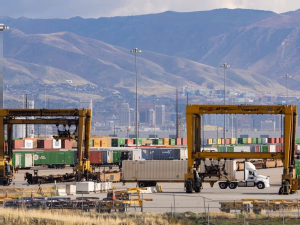In our world of transportation, chaos reigned in New York and New Jersey with dire effects radiating out to the remainder of the nation because of the region's economic and financial importance. Airports were closed, highways flooded and railroad tracks were lifted from their beds by the fury of the storm. Thousands of items that make up our complex civilization from critical gasoline supplies to perhaps equally vital toilet tissue were either not available or at best in short supply.
Sandy was only the latest in a series of horrific disturbances around the world. Nature has been on the warpath in the 21st century. Almost two years ago, a severe earthquake and tsunami shook Japan's east coast. Japanese society went into shock as thousands of lives were lost and billions of dollars vanished in its GDP. The nation's industry was crippled. An even more destructive event from a global manufacturing and logistics perspective occurred shortly afterwards; the major floods in Thailand. The nation is a critical supplier of parts and components to the world's electronic industries. Some thirty per cent of Thailand's manufacturing capacity was shut down for months with horrendous consequences. One major U.S. electronics company, Intel, reported sharply lower earnings in one quarter because lack of critical supplies from Thailand.
These cataclysmic events are having a profound effect on global industry's favorite method of moving goods;; Just-In-Time or J-I-T. Just-I-Time is simple in theory but devilishy difficult in practice. J-I-T means delivering needed parts and supplies to the factory floor or distribution warehouse almost to the last minute for precise manufacturing schedules. It allows cutting inventory to the bone. There is a saving on inventory costs and interest charges while at the same time increasing production efficiency. When nature is benign, when nations are at peace with each other (and at peace within their own borders) and no Arab 'Springs' with mob insurrections, J-I-T works splendidly. Just-In-Time is like a tender flower, however. It must have a favorable climate in which to flourish.
Successful application of J-I-T demands no pause in any link in the supply chain. Parts and supplies must flow smoothly from shipper via road, air or sea to consignee to ensure that assembly lines keep humming and with a sufficient amount of goods for retailers to sell. With J-I-T, the shipper is rolling dice hoping a seven comes up every time. With all the supply disruptions during the past few years, it's more like snake eyes.
With events in the 21st century reflecting catastrophe after catastrophe, questions must arise arise as to the value of Just-In-Time under all circumstances. Thousands of dollars may indeed be saved in inventory costs and interest charges. But millions can vanish with the silence of assembly lines or with no goods to sell. The extreme claims of J-I-T proponents as the most ideal method of transport under all kinds of circumstances must be taken with extreme doses of salt. The trillion dollars each year spent on global transportation by shippers, carriers and their agents are at stake.
I believe there is a better way to move freight. I think of it as a fresh breeze blowing through the global economy. That fresh breeze is Just-In-Case (J-I-C).
Just-In-Case means moving freight by land, sea or air in a number of days rather than hours before it is needed on the factory floor or distribution center. It means moving 10,00 tons of cargo in a single shipment rather than dividing the freight into multiple shipments of 1,000 tons each.. A single shipment minimizes loss or delay so often the case with










